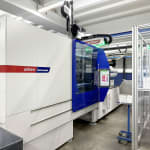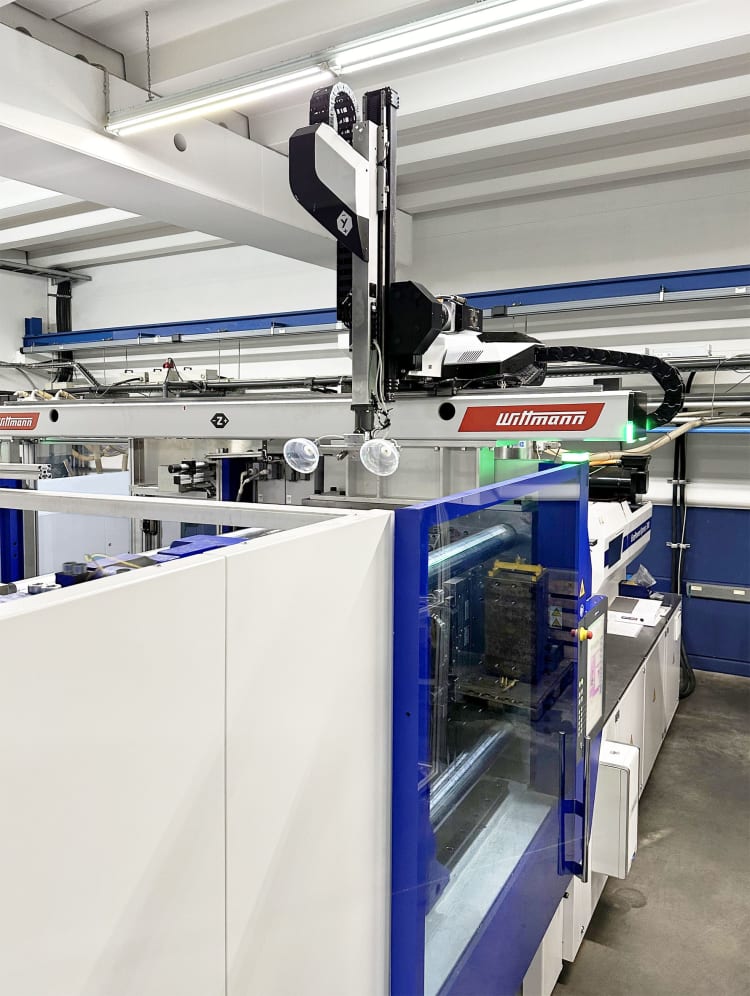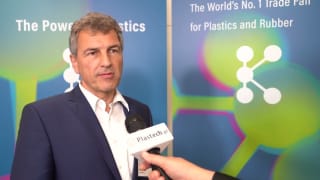
A new packaging concept in thin-wall technology has brought about the energy revolution in injection molding for Heinrich Axmann GmbH & Co. KG in Cologne, Germany. For this project, the company invested for the first time in an all-electric injection molding machine. Compared to hybrid machine models, the cut in energy consumption is more than 30 per cent. The injection molding partner Wittmann delivered the EcoPower Xpress machine as a fully integrated, all-inclusive solution equipped with a Sonic high-speed robot.
Almost everyone has experienced this: when opening the package, the ready-made meal looks delicious. The meat and side dishes are attractively arranged. But now comes the tricky part: transferring the food onto a plate. Many consumers use a spoon, others even turn the bowl upside down to get the contents out, which definitely spoils their looks and thus all too often the appetite as well. Heiner Axmann, CEO of Heinrich Axmann GmbH & Co. KG, has come up with a brilliant idea to solve this dilemma. He developed a plastic bowl which can be opened with the help of a tear-open mechanism along the bottom of the package. The edge of the package then folds back upwards, the meal slides out smoothly onto the plate and looks just as appetizing as it did when freshly prepared and filled into the packaging bowl. - Our customer had institutions such as hospitals, retirement homes or child day care centers in view, which operate without kitchens of their own - Heiner Axmann reports during our visit to the corporate headquarters in the southern Cologne suburb of Rodenkirchen. - Everyone should be able to enjoy their meals. What is more, the new concept offers highest possible standards of hygiene. The nurse dishing out the meals never comes into contact with the food herself.

Creative from experience
Established in 1932 and family-owned ever since, Heinrich Axmann specializes in developing and manufacturing packaging solutions made of plastic. Bowls and small pots for both liquid and solid food items, such as gourmet salads or coffee creamers, constitute a major part of its production volume. Again and again, new creative solutions emerge from its extensive wealth of experience. So, the impulse for developing the new ready-to-eat food bowl goes back to the lid for a delicatessen package already designed in 1979. The original drawing board design is still kept in a cabinet at Heiner Axmann’s office today.
With this latest new development, the company has landed a real coup. - Our customer is still at the start-up stage, but already has the prospect of a major order from the USA. The first bowls in the new packaging design will be used at a New York hospital. In this case, the customer is a major catering company, for which a large quantity of bowls has already been produced to FDA standard in Cologne.

Delivery of the mold for series production is on the way. The injection molding cell for this purpose is already there. Especially for this new product, Heiner Axmann has invested in an EcoPower Xpress 300 all-electric injection molding machine with 300 tons clamping force and a Sonic high-speed robot. The injection molding partner Wittmann has supplied the production cell as a fully integrated, complete solution.
Highest injection performance for strongly varying wall thicknesses
With this package for instant food, Axmann also opens up a new chapter in injection molding technology. The EcoPower Xpress is the first all-electric injection molding machine in its machine pool. - For a long time, it has not been possible to manufacture thin-walled packaging articles by high-speed injection molding on an all-electric injection molding machine”, Heiner Axmann explains -The EcoPower Xpress, however, is fully up to the challenge - The demands on the injection performance are particularly stringent.
For tearing open the package, the bowl comes with two flaps on one of its long sides – two, because the designers thought of left-handers as well when developing the part. Starting from these flaps, two fine, extremely thin-walled lines, about 5 millimeters apart, run along the bottom of the package. Predetermined breaking points form a kind of tear strip.

The wall thickness at these breaking points is no more than 0.05 millimeters. This is only a tenth of the wall thickness at the bottom and at the edge. Nevertheless, the bowl, consisting of a PP copolymer, must remain stable and airtight while being filled with hot food. 120 °C is the required tolerance. Injection takes place centrally at the bottom of the package. - Our greatest challenge is that during injection the melt needs to pass twice through these extremely thin areas in order to fill the cavity completely to the very edges - Andreas Brüggemann, the company’s Production Manager, explains - For this purpose, we need a particularly high injection speed with extremely short filling times.
- The EcoPower Xpress is predestined for this type of application - says Andreas Hollweg, Sales Manager for Wittmann injection molding technology in Germany. - The injection units of this machine series are laid out for the highly dynamic injection speeds required in this case - A further advantage with a very positive effect especially in the production of food packaging is the encapsulated toggle lever provided as standard, which ensures an extremely clean production process.




